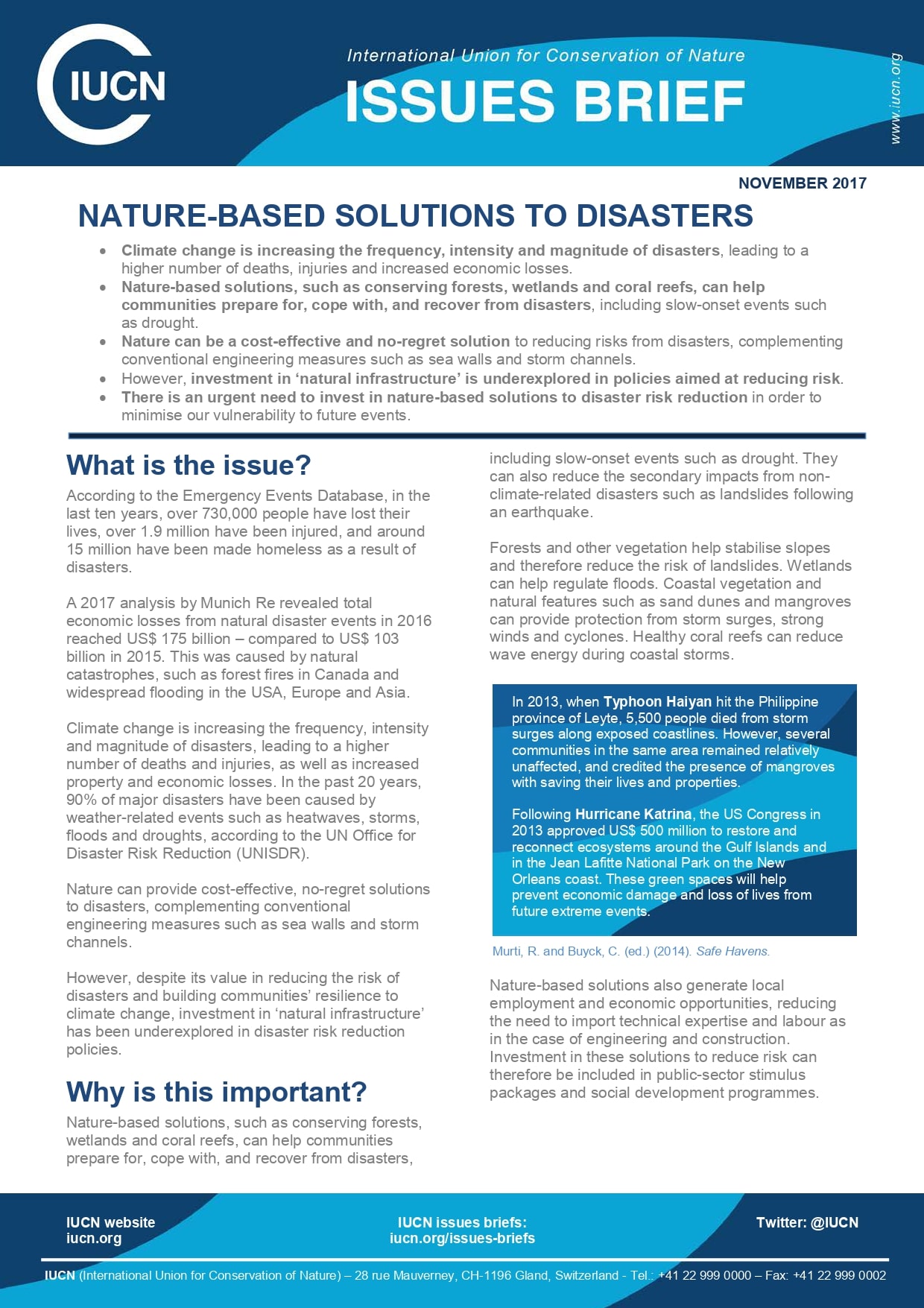What is the issue?
According to the Emergency Events Database, in the last ten years, over 730,000 people have lost their lives, over 1.9 million have been injured, and around 15 million have been made homeless as a result of disasters.
A 2017 analysis by Munich Re revealed total economic losses from natural disaster events in 2016 reached US$ 175 billion – compared to US$ 103 billion in 2015. This was caused by natural catastrophes, such as forest fires in Canada and widespread flooding in the USA, Europe and Asia.
Climate change is increasing the frequency, intensity and magnitude of disasters, leading to a higher number of deaths and injuries, as well as increased property and economic losses. In the past 20 years, 90% of major disasters have been caused by weather-related events such as heatwaves, storms, floods and droughts, according to the UN Office for Disaster Risk Reduction (UNISDR).
Nature can provide cost-effective, no-regret solutions to disasters, complementing conventional engineering measures such as sea walls and storm channels.
However, despite its value in reducing the risk of disasters and building communities’ resilience to climate change, investment in ‘natural infrastructure’ has been underexplored in disaster risk reduction policies.






